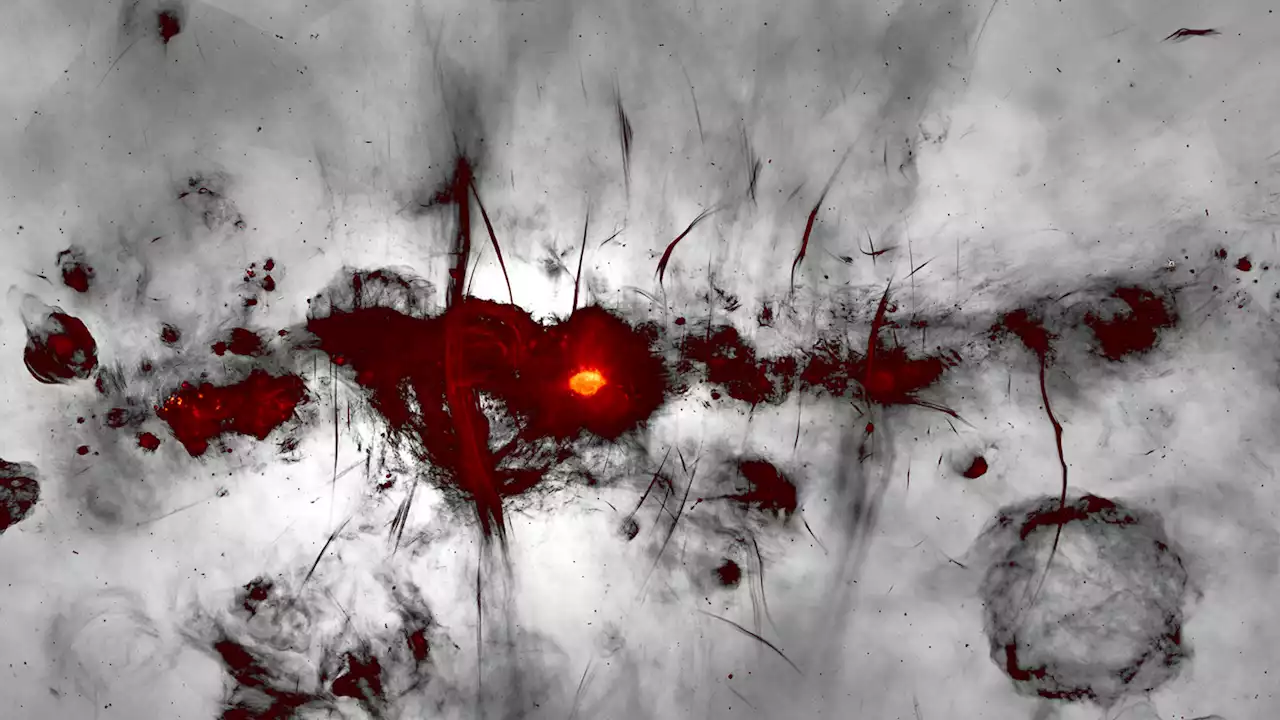Like an ancient cardigan, the Milky Way should be absolutely riddled with black holes.
. Experiments set up to monitor the sky detect thousands of microlensing events every year; most of them are stars moving in front of other stars, which is not surprising, considering how many stars are out there.
On 2 June 2011, two separate microlensing surveys – the Optical Gravitational Lensing Experiment and Microlensing Observations in Astrophysics – independently recorded an event that ended up peaking on July 20. This event, named MOA-2011-BLG-191/OGLE-2011-BLG-0462 , was remarkable. Not only was it unusually long, around 270 days, but it also showed unusually high magnification. Since high magnification events are sensitive to perturbations, such as might be seen from a planet orbiting the lensing object, scientists converged to take follow-up observations and conduct analyses.Observations of the region were taken on eight separate occasions using the Hubble Space Telescope, up until 2017.
In fact, they were even able to take measurements of the black hole. The changes observed in the light of the distant star allowed the team to calculate its mass and motion. The black hole, they found, has a mass about 7.1 times the mass of the Sun. That would make its event horizon around justTake a moment to marvel at that.
And here's where it gets even cooler. The team calculated how fast that object is moving through the Milky Way: 45 kilometers per second. That makes it not just any old black hole but a runaway black hole.It was probably ejected into space when its precursor star exploded in a supernova. If such a supernova explosion is lopsided, the uneven force can flick the star's collapsed core off into space, in what we call a natal kick.
Norge Siste Nytt, Norge Overskrifter
Similar News:Du kan også lese nyheter som ligner på denne som vi har samlet inn fra andre nyhetskilder.
 The heart of the Milky Way looks like contemporary art in this new radio imageAn image that looks like a trippy Eye of Sauron or splatter of modern art is actually a new detailed look at the Milky Way’s chaotic center, as seen in radio wavelengths.
The heart of the Milky Way looks like contemporary art in this new radio imageAn image that looks like a trippy Eye of Sauron or splatter of modern art is actually a new detailed look at the Milky Way’s chaotic center, as seen in radio wavelengths.
Les mer »
 Astronomers Find First-Ever Rogue Black Hole Adrift in the Milky WayScientists have announced the first-ever unambiguous discovery of a free-floating black hole, a rogue wanderer in the void some 5,000 light-years from Earth.
Astronomers Find First-Ever Rogue Black Hole Adrift in the Milky WayScientists have announced the first-ever unambiguous discovery of a free-floating black hole, a rogue wanderer in the void some 5,000 light-years from Earth.
Les mer »
 Astronomers Find First-Ever Rogue Black Hole Adrift in the Milky WayScientists have announced the first-ever unambiguous discovery of a free-floating black hole, a rogue wanderer in the void some 5,000 light-years from Earth.
Astronomers Find First-Ever Rogue Black Hole Adrift in the Milky WayScientists have announced the first-ever unambiguous discovery of a free-floating black hole, a rogue wanderer in the void some 5,000 light-years from Earth.
Les mer »
 A Highly Eccentric Black Hole Merger Detected for the First Time - Universe TodayRecent research into a gravitational wave event has revealed new insights into black hole mergers, cosmic expansion, and the growth of supermassive black holes.
A Highly Eccentric Black Hole Merger Detected for the First Time - Universe TodayRecent research into a gravitational wave event has revealed new insights into black hole mergers, cosmic expansion, and the growth of supermassive black holes.
Les mer »
